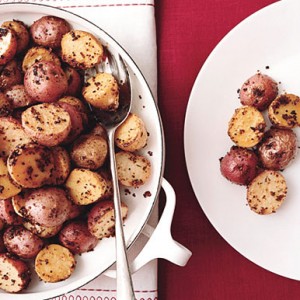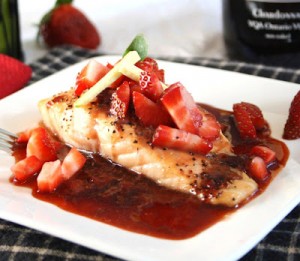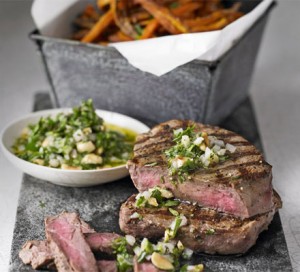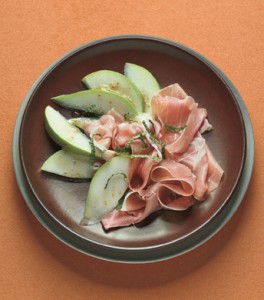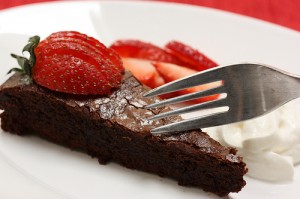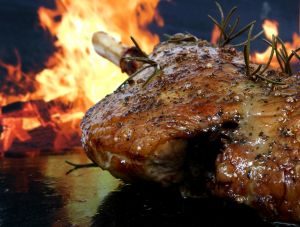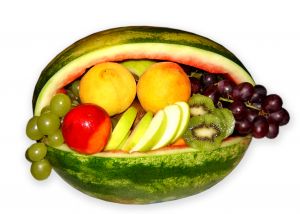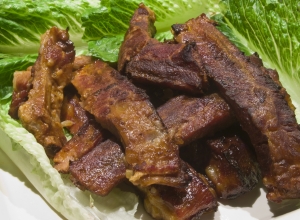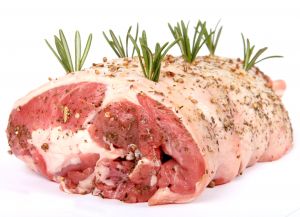 We hear a lot about fat in the diet – about how some fat is good and some fat is bad, but what are the different types of fat? Fats are part of a group of compounds known as lipids. We have already looked at one other compound in this group – cholesterol. We learnt in that post that lipids are responsible for energy storage, and the structure of cell membranes, among other things.
We hear a lot about fat in the diet – about how some fat is good and some fat is bad, but what are the different types of fat? Fats are part of a group of compounds known as lipids. We have already looked at one other compound in this group – cholesterol. We learnt in that post that lipids are responsible for energy storage, and the structure of cell membranes, among other things.
Fats are composed of the elements carbon, oxygen and hydrogen and are found in plants, fish and meats. They form a major part of cell membranes in the body, and also help the absorption of certain vitamins, for example, Vitamin A is fat-soluble.
Fat also gives us energy, and the body can burn fat as energy once we run out of carbohydrates, and it also insulates us against the cold. Certain body organs are protected from injury by a layer of fat, for example, the kidneys.
So what are the different types of fat?
Saturated fats
The word saturated refers to the chemical bonds between the carbon, hydrogen and oxygen.
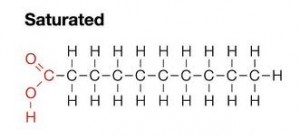 As you can see in the above picture of a saturated fat molecule, every carbon atom has the maximum number of hydrogen atoms attached to it.
As you can see in the above picture of a saturated fat molecule, every carbon atom has the maximum number of hydrogen atoms attached to it.
Most saturated fats occur in animal and dairy products, and some also occur in coconut and palm oil. There are different types of saturated fats, for example palmitic acid, and stearic acid. The difference between the fatty acids is the number of carbon atoms in the chain.
Whilst some government organisations advise that one should avoid saturated fats because they are shown to increase the amount of “bad” cholesterol in the blood, other sources do not agree that the link between saturated fat intake, cholesterol and cardiovascular disease is concrete.
If you choose to limit saturated fat in your diet, I would merely suggest that you do not replace it with sugar and refined carbohydrates, but instead choose other types of fats or more fruit and vegetables in your diet.
Unsaturated fats
Conversely, the word unsaturated means that these are fats without the maximum number of hydrogen atoms.
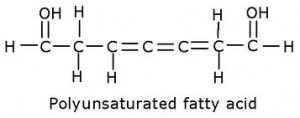
Polyunsaturated fats are where, as above, there is more than one double carbon bond.
Monounsaturated fats are where there is only one double carbon bond.
Polyunsaturated fats
Polyunsaturated fats are mainly omega-3 and omega-6 fatty acids. The body cannot make these fats, it relies on the ones we ingest.
Omega-3 fatty acids are found in fish oils, for example in foods such as tuna steak and salmon fillets – these are very good for you.
Omega-6 fatty acids are found in vegetable oils like sunflower oil and corn oil.
Monounsaturated fats
Monounsaturated fats are found in plant oils like olive oil, and also in avocados and nuts.
These fats are also good for you, and help lower “bad” cholesterol without raising “good” cholesterol. They are better for cooking with than polyunsaturated fats because they develop fewer “free radicals”.
So what about trans fats?
Trans fats are generally considered worse than saturated fats, despite actually being a type of unsaturated fat. Small amounts occur naturally in meat and dairy products, but they are also produced during the process of hydrogenation.
Hydrogenation converts liquid vegetable oils into semi-solid fats in the manufacture of some margarines. Basically additional hydrogen atoms are added to the double carbon bonds in the picture above.
To avoid trans fats, watch out for the phrase “partially hydrogenated oils or fats”. In the UK, many manufacturers have now stopped using these ingredients.
Summary
As you can see, there are many different types of fat, and the body needs fat to function. Even if you choose to reduce saturated fat in your diet, you should ensure that you are getting some fat, and can make choices such as olive oil, avocados and oily fish such as salmon to achieve this.
Tags:
fat,
saturated,
unsaturated

